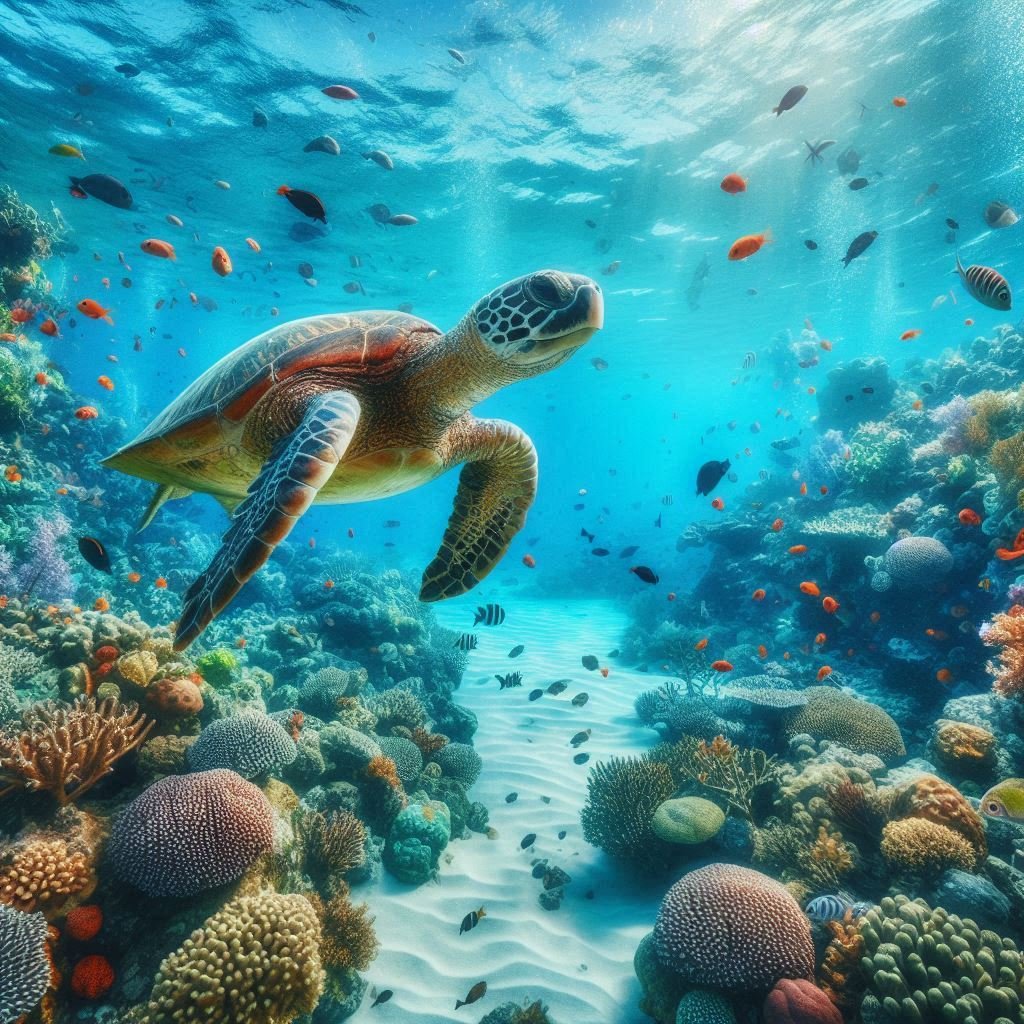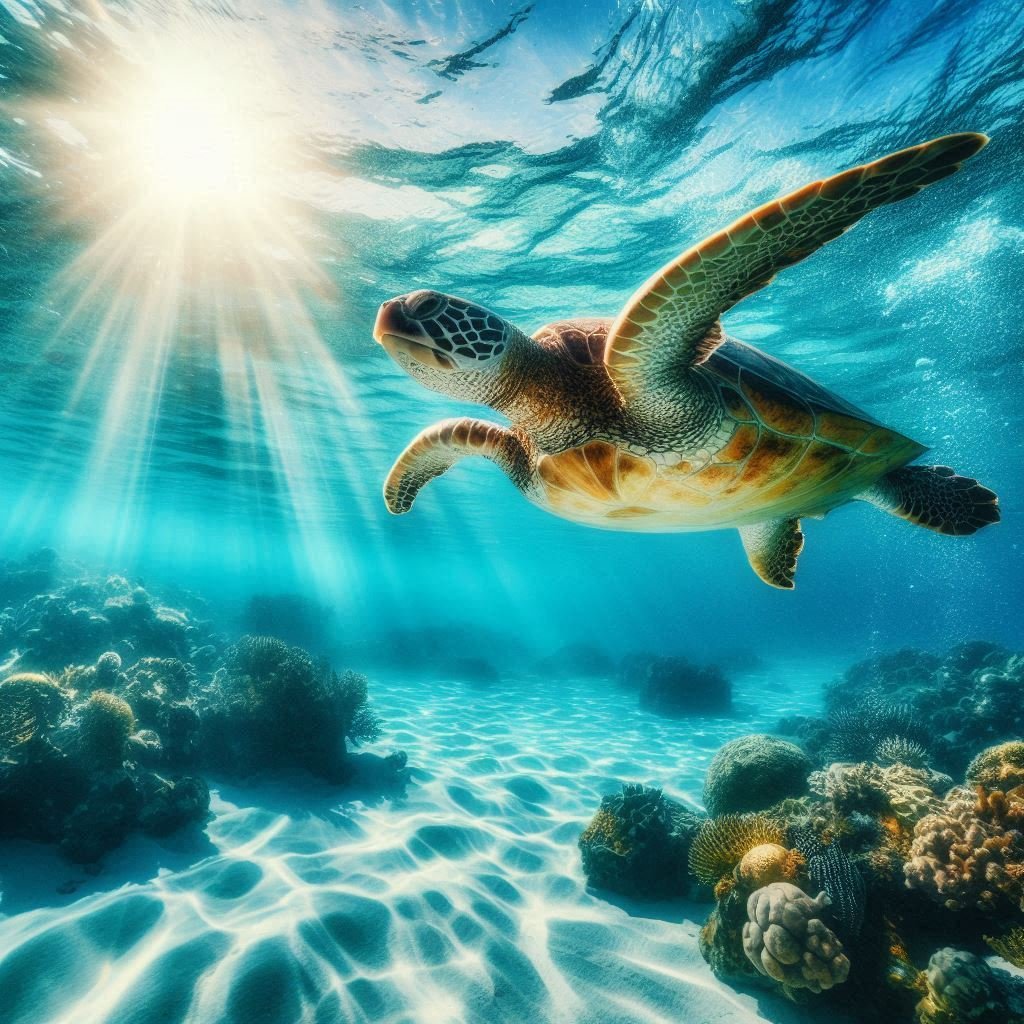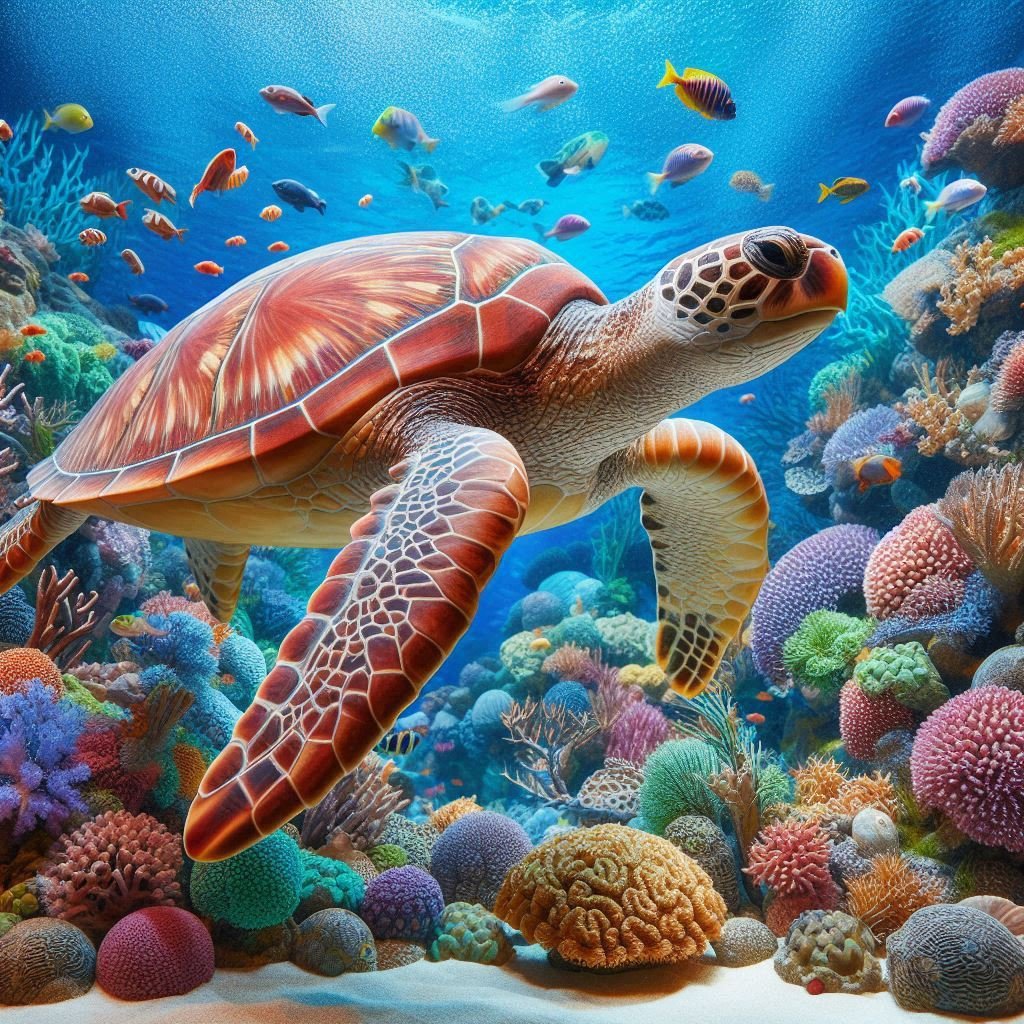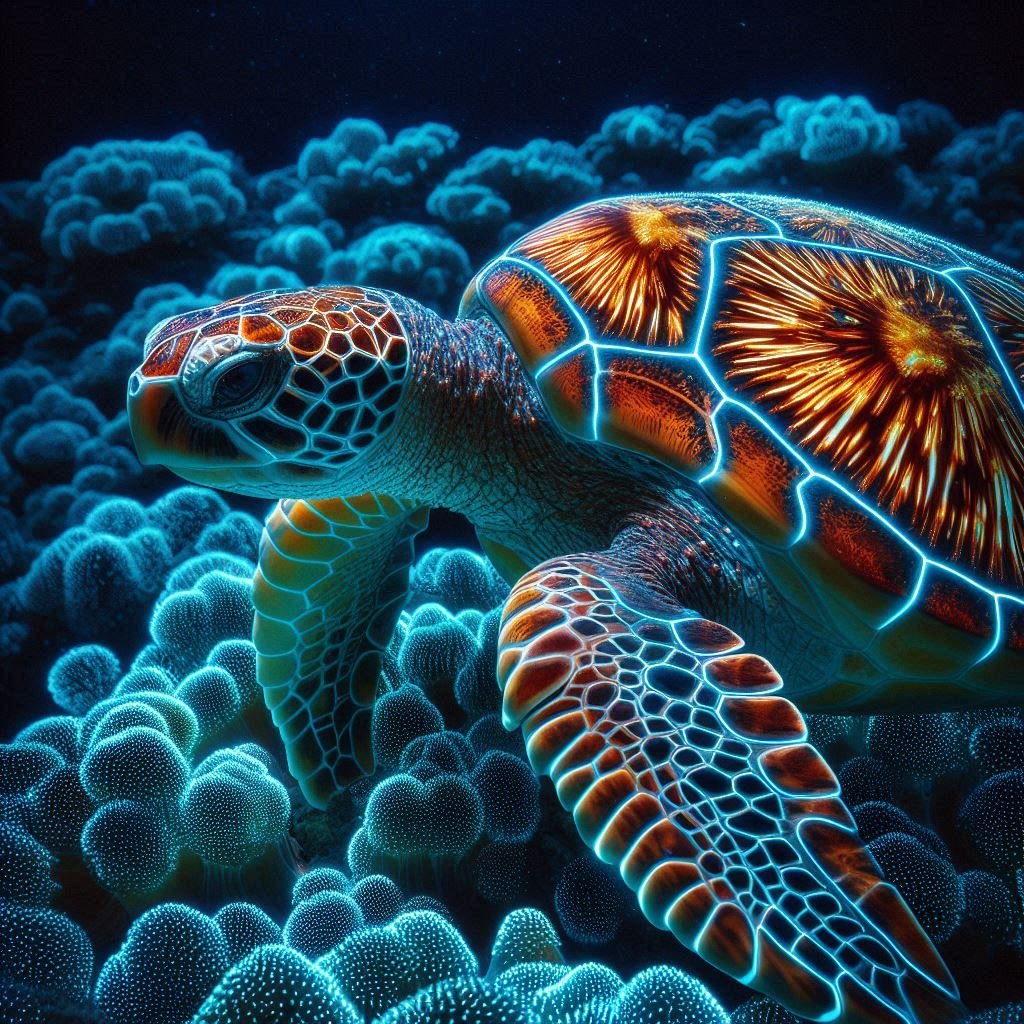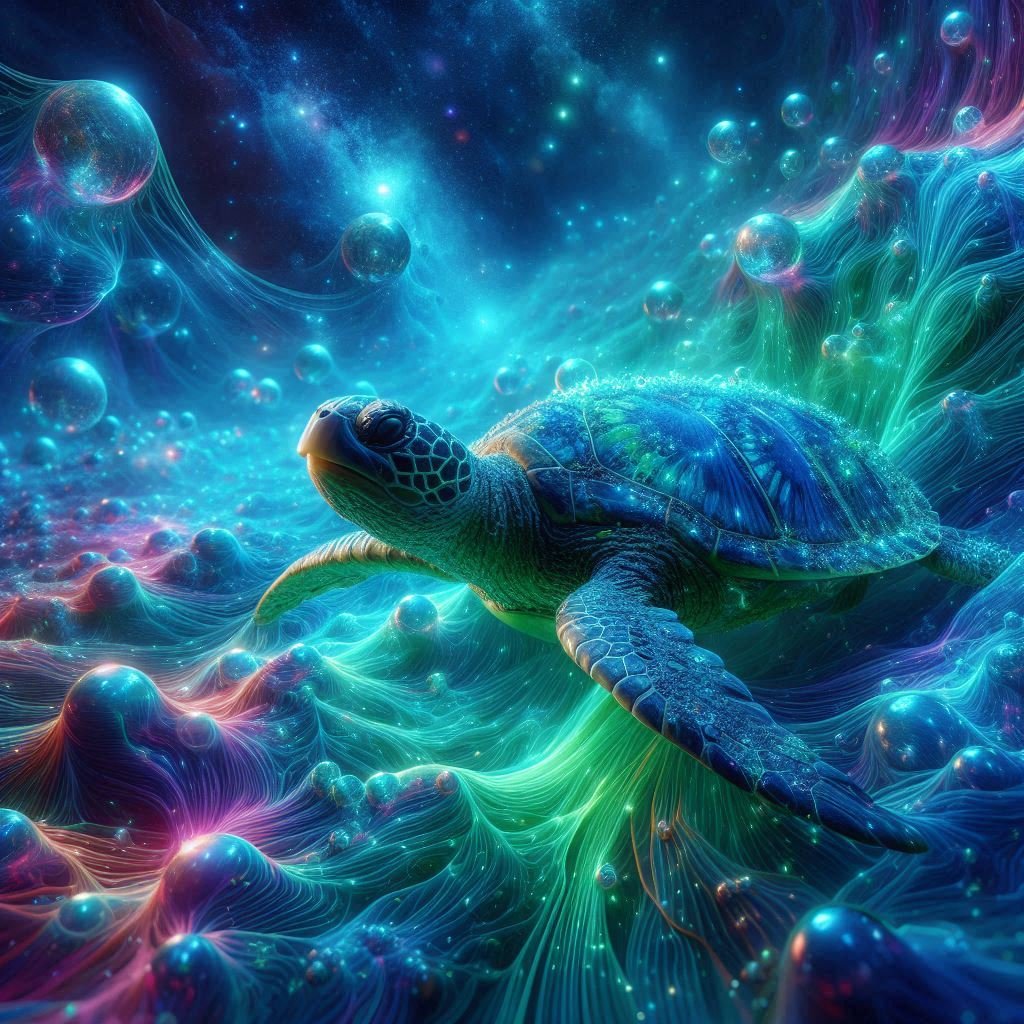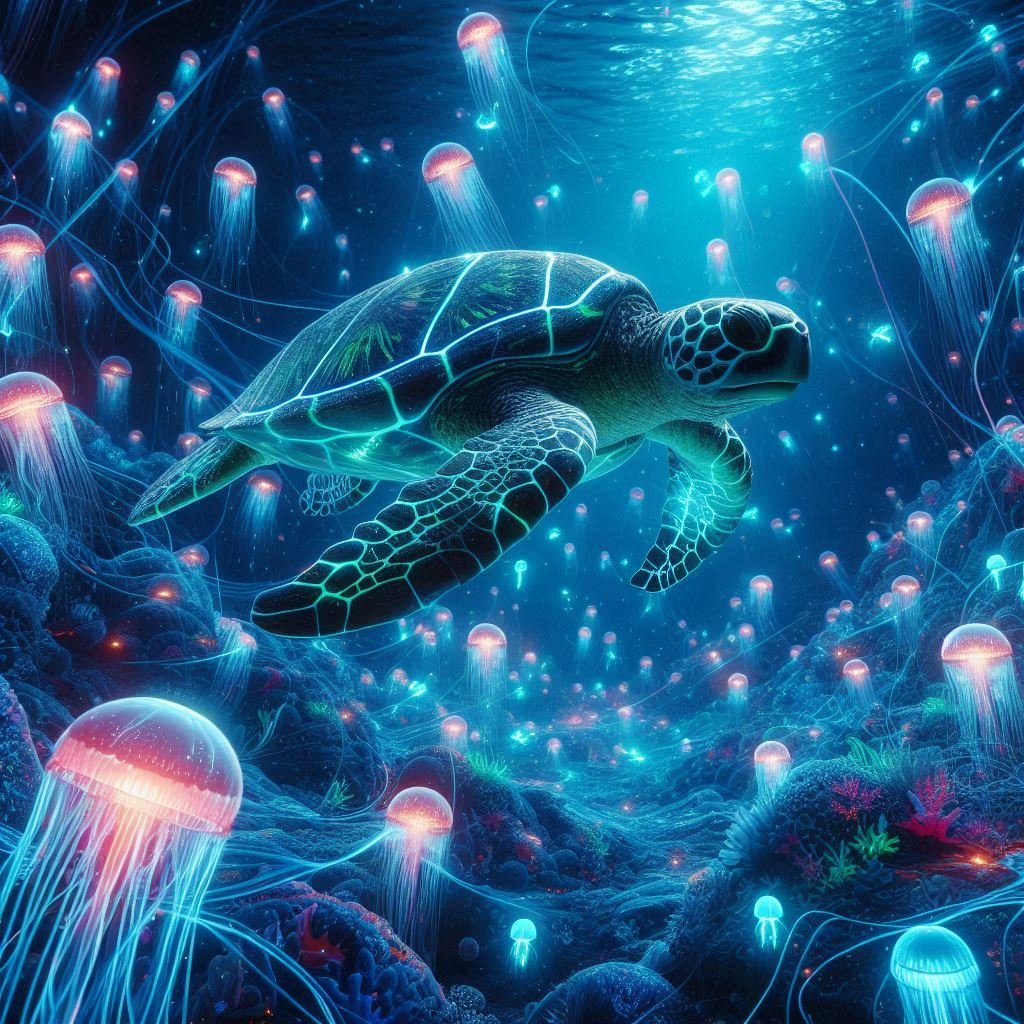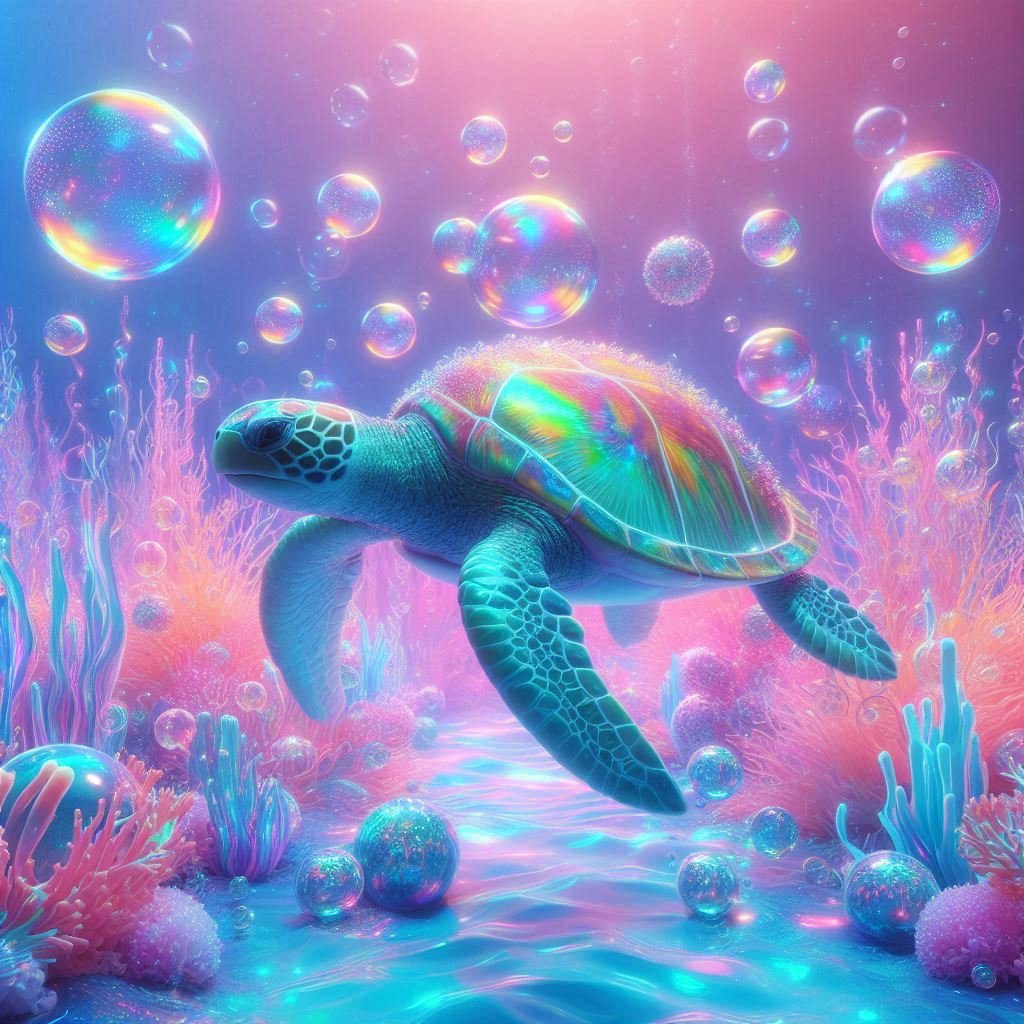AI art evolution: How to go from “meh” to “wow” with just a few tweaks
We’ve all done it. You type in a simple AI prompt like “Sea turtle swimming” and hit generate, expecting something majestic. Instead, you get a weird, blurry turtle that looks like it was assembled by a committee of confused algorithms. Meanwhile, some AI wizard out there is crafting prompts so detailed that their sea turtle looks like it belongs in an underwater sci-fi movie poster. What’s their secret? Better prompting.
This blog isn’t just about starting basic and getting fancier—it’s about how small tweaks to a prompt can drastically change your AI-generated results. By adjusting descriptive words, lighting, color, mood, and artistic style, you can take an average image and turn it into something extraordinary.
Buckle up, because by the end of this, you’ll see firsthand how every tweak makes a difference. Let’s get started. 🚀
The 10-step AI prompt evolution:
1️⃣ Initial prompt: Sea turtle in the water
(A basic, vague prompt—AI will give you a generic turtle with no specific details.)
2️⃣ Updated prompt: A realistic sea turtle swimming in clear blue ocean water
(Adding realism and clarity improves the accuracy of the image.)
3️⃣ Updated prompt: A majestic sea turtle gliding through crystal-clear tropical waters, sunlight filtering through
(Now we’ve added “majestic” to set the tone and “sunlight filtering through” to add lighting effects.)
4️⃣ Updated prompt: A beautifully detailed sea turtle swimming gracefully in a vibrant coral reef, surrounded by colorful fish
(Descriptive words like “detailed” and “gracefully” affect the image’s precision and movement.)
5️⃣ Updated prompt: A sea turtle with intricate shell patterns, illuminated by glowing bioluminescent coral in an underwater paradise
(Adding “intricate shell patterns” and “bioluminescence” changes the textures and atmosphere.)
6️⃣ Updated prompt: A surreal sea turtle with shimmering emerald and sapphire tones, floating through a dreamlike neon-lit ocean
(Introducing “surreal”, “shimmering”, “neon-lit”, and “dreamlike” shifts the image into an artistic, fantasy-like direction.)
7️⃣ Updated prompt: A stunning iridescent sea turtle, its shell reflecting a rainbow of colors as it swims through an ethereal pastel-hued ocean
(Tweaking color, lighting, and mood makes the scene softer and more magical.)
8️⃣ Updated prompt: An otherworldly sea turtle with luminescent markings, drifting through a futuristic underwater world filled with glowing jellyfish and neon coral
(Adding “otherworldly” and “futuristic” make it more sci-fi, adding jellyfish helps build the scene.)
9️⃣ Updated prompt: A cosmic-inspired sea turtle, its shell sparkling like a galaxy, swimming through a mystical ocean of holographic waves and electric blue seaweed
(Switching to “cosmic” and “holographic” creates a sci-fi space effect.)
🔟 Final prompt: An iridescent sea turtle swimming in a pastel ocean surrounded by hologram bubbles, neon-colored seaweed, and glowing coral—a mesmerizing, futuristic underwater dreamscape
(Bringing it all together with a fully stylized world.)
Final thoughts: Tweaking prompts for maximum impact
And there you have it! By gradually adjusting the words in a prompt, we’ve transformed a basic, boring request into a vivid, detailed masterpiece. Each tweak—whether it’s adding a mood, color, lighting, or specific details—has a huge impact on the final result. AI isn’t mind-reading—it just follows what you tell it. The better you describe your vision, the closer AI will get to generating exactly what you want.
Next time you use an AI image generator, experiment with small tweaks and see how much of a difference they make.Your prompts will never be basic again. 😉
